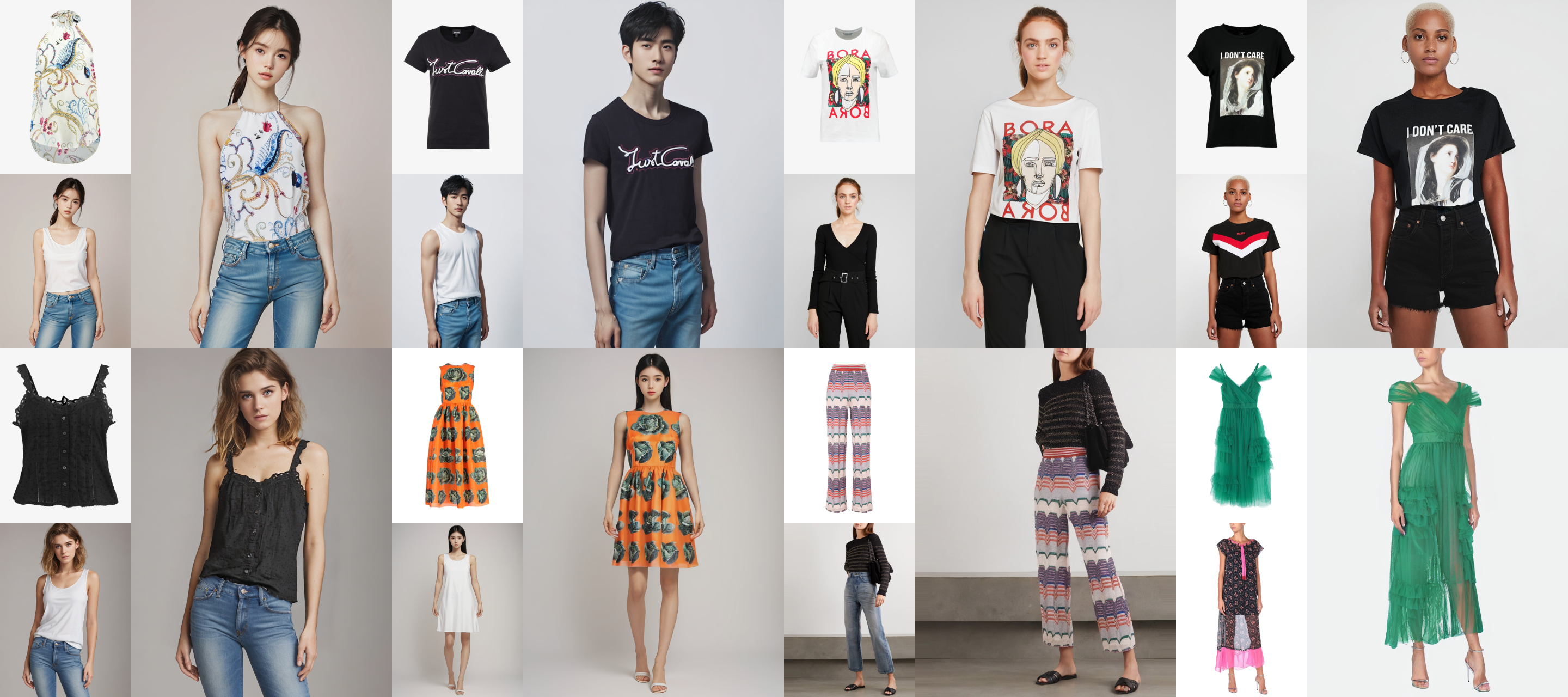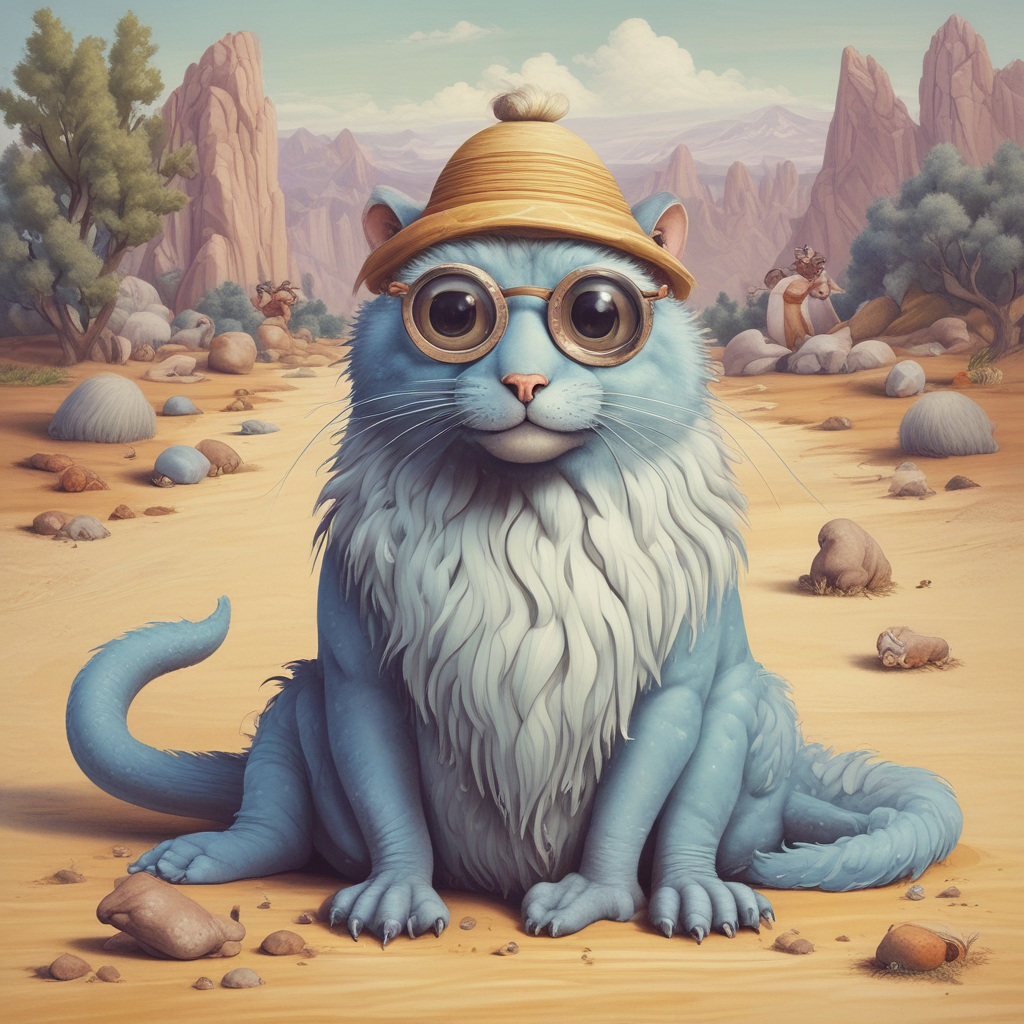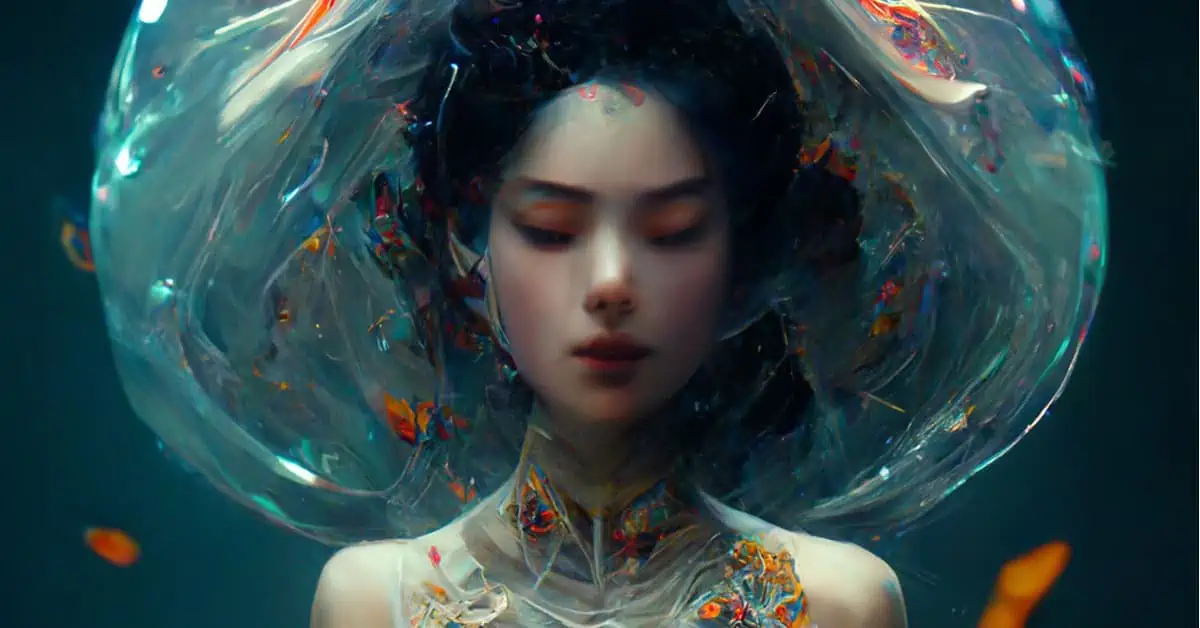oot_diffusion
Maintainer: viktorfa

15

| Property | Value |
|---|---|
| Run this model | Run on Replicate |
| API spec | View on Replicate |
| Github link | View on Github |
| Paper link | No paper link provided |
Create account to get full access
Model overview
oot_diffusion is a virtual dressing room model created by viktorfa. It allows users to visualize how garments would look on a model. This can be useful for online clothing shopping or fashion design. Similar models include idm-vton, which provides virtual clothing try-on, and gfpgan, which restores old or AI-generated faces.
Model inputs and outputs
The oot_diffusion model takes several inputs to generate an image of a model wearing a specific garment. These include a seed value, the number of inference steps, an image of the model, an image of the garment, and a guidance scale.
Inputs
- Seed: An integer value used to initialize the random number generator.
- Steps: The number of inference steps to perform, between 1 and 40.
- Model Image: A clear picture of the model.
- Garment Image: A clear picture of the upper body garment.
- Guidance Scale: A value between 1 and 5 that controls the influence of the prompt on the generated image.
Outputs
- An array of image URLs representing the generated outputs.
Capabilities
The oot_diffusion model can generate realistic images of a model wearing a specific garment. This can be useful for virtual clothing try-on, fashion design, and online shopping.
What can I use it for?
You can use oot_diffusion to visualize how clothing would look on a model, which can be helpful for online clothing shopping or fashion design. For example, you could use it to try on different outfits before making a purchase, or to experiment with different garment designs.
Things to try
With oot_diffusion, you can experiment with different input values to see how they affect the generated output. Try adjusting the seed, number of steps, or guidance scale to see how the resulting image changes. You could also try using different model and garment images to see how the model can adapt to different inputs.
This summary was produced with help from an AI and may contain inaccuracies - check out the links to read the original source documents!
Related Models

ootdifussiondc

4.9K
The ootdifussiondc model, created by maintainer k-amir, is a virtual dressing room model that allows users to try on clothing in a full-body setting. This model is similar to other virtual try-on models like oot_diffusion, which provide a dressing room experience, as well as stable-diffusion, a powerful text-to-image diffusion model. Model inputs and outputs The ootdifussiondc model takes in several key inputs, including an image of the user's model, an image of the garment to be tried on, and various parameters like the garment category, number of steps, and image scale. The model then outputs a new image showing the user wearing the garment. Inputs vton_img**: The image of the user's model garm_img**: The image of the garment to be tried on category**: The category of the garment (upperbody, lowerbody, or dress) n_steps**: The number of steps for the diffusion process n_samples**: The number of samples to generate image_scale**: The scale factor for the output image seed**: The seed for random number generation Outputs Output**: A new image showing the user wearing the selected garment Capabilities The ootdifussiondc model is capable of generating realistic-looking images of users wearing various garments, allowing for a virtual try-on experience. It can handle both half-body and full-body models, and supports different garment categories. What can I use it for? The ootdifussiondc model can be used to build virtual dressing room applications, allowing customers to try on clothes online before making a purchase. This can help reduce the number of returns and improve the overall shopping experience. Additionally, the model could be used in fashion design and styling applications, where users can experiment with different outfit combinations. Things to try Some interesting things to try with the ootdifussiondc model include experimenting with different garment categories, adjusting the number of steps and image scale, and generating multiple samples to explore variations. You could also try combining the model with other AI tools, such as GFPGAN for face restoration or k-diffusion for further image refinement.
Updated Invalid Date

idm-vton

310
The idm-vton model, developed by the researcher cuuupid, is a state-of-the-art clothing virtual try-on system designed to work in the wild. It outperforms similar models like instant-id, absolutereality-v1.8.1, and reliberate-v3 in terms of realism and authenticity. Model inputs and outputs The idm-vton model takes in several input images and parameters to generate a realistic image of a person wearing a particular garment. The inputs include the garment image, a mask image, the human image, and optional parameters like crop, seed, and steps. The model outputs a single image of the person wearing the garment. Inputs Garm Img**: The image of the garment, which should match the specified category (e.g., upper body, lower body, or dresses). Mask Img**: An optional mask image that can be used to speed up the process. Human Img**: The image of the person who will be wearing the garment. Category**: The category of the garment, which can be "upper_body", "lower_body", or "dresses". Crop**: A boolean indicating whether to use cropping on the input images. Seed**: An integer that sets the random seed for reproducibility. Steps**: The number of diffusion steps to use for generating the output image. Outputs Output**: A single image of the person wearing the specified garment. Capabilities The idm-vton model is capable of generating highly realistic and authentic virtual try-on images, even in challenging "in the wild" scenarios. It outperforms previous methods by using advanced diffusion models and techniques to seamlessly blend the garment with the person's body and background. What can I use it for? The idm-vton model can be used for a variety of applications, such as e-commerce clothing websites, virtual fashion shows, and personal styling tools. By allowing users to visualize how a garment would look on them, the model can help increase conversion rates, reduce return rates, and enhance the overall shopping experience. Things to try One interesting aspect of the idm-vton model is its ability to work with a wide range of garment types and styles. Try experimenting with different categories of clothing, such as formal dresses, casual t-shirts, or even accessories like hats or scarves. Additionally, you can play with the input parameters, such as the number of diffusion steps or the seed, to see how they affect the output.
Updated Invalid Date

dreamlike-diffusion

1
The dreamlike-diffusion model is a diffusion model developed by replicategithubwc that generates surreal and dreamlike artwork. It is part of a suite of "Dreamlike" models created by the same maintainer, including Dreamlike Photoreal and Dreamlike Anime. The dreamlike-diffusion model is trained to produce imaginative and visually striking images from text prompts, with a unique artistic style. Model inputs and outputs The dreamlike-diffusion model takes a text prompt as the primary input, along with optional parameters like image dimensions, number of outputs, and the guidance scale. The model then generates one or more images based on the provided prompt. Inputs Prompt**: The text that describes the desired image Width**: The width of the output image Height**: The height of the output image Num Outputs**: The number of images to generate Guidance Scale**: The scale for classifier-free guidance, which controls the balance between the text prompt and the model's own creative generation Negative Prompt**: Text describing things you don't want to see in the output Scheduler**: The algorithm used for diffusion sampling Seed**: A random seed value to control the image generation Outputs Output Images**: An array of generated image URLs Capabilities The dreamlike-diffusion model excels at producing surreal, imaginative artwork with a unique visual style. It can generate images depicting fantastical scenes, abstract concepts, and imaginative interpretations of real-world objects and environments. The model's outputs often have a sense of visual poetry and dreamlike abstraction, making it well-suited for creative applications like art, illustration, and visual storytelling. What can I use it for? The dreamlike-diffusion model could be useful for a variety of creative projects, such as: Generating concept art or illustrations for stories, games, or other creative works Producing unique and eye-catching visuals for marketing, advertising, or branding Exploring surreal and imaginative themes in art and design Inspiring new ideas and creative directions through the model's dreamlike outputs Things to try One interesting aspect of the dreamlike-diffusion model is its ability to blend multiple concepts and styles in a single image. Try experimenting with prompts that combine seemingly disparate elements, such as "a mechanical dragon flying over a neon-lit city" or "a portrait of a robot mermaid in a thunderstorm." The model's unique artistic interpretation can lead to unexpected and visually captivating results.
Updated Invalid Date
🐍
OOTDiffusion

235
The OOTDiffusion model is a powerful image-to-image AI model developed by Yuhao Xu, Tao Gu, Weifeng Chen, and Chengcai Chen from Xiao-i Research. It is built on top of the Latent Diffusion architecture and aims to enable controllable virtual try-on applications. The model is similar to other diffusion-based text-to-image generation models like Stable Diffusion, but it has been specifically optimized for the task of clothing transfer and virtual try-on. Model inputs and outputs Inputs Clothing Image**: An image of the clothing item that the user wants to try on. Person Image**: An image of the person who will be wearing the clothing. Semantic Map**: A segmentation map that provides information about the different parts of the person's body. Outputs Composite Image**: An image that shows the person wearing the clothing item, with the clothing seamlessly integrated into the image. Capabilities The OOTDiffusion model is capable of generating high-quality composite images that show a person wearing a clothing item, even in cases where the clothing and person images were not originally aligned. The model is able to handle a variety of clothing types and styles, and can generate realistic-looking results that take into account the person's body shape and pose. What can I use it for? The OOTDiffusion model is well-suited for applications that involve virtual try-on, such as online clothing stores or fashion design tools. By allowing users to see how a particular clothing item would look on them, the model can help improve the shopping experience and reduce the number of returns. Additionally, the model could be used in the fashion industry for prototyping and design purposes, allowing designers to quickly visualize how their creations would look on different body types. Things to try One interesting thing to try with the OOTDiffusion model is to experiment with different clothing styles and body types. By providing the model with a diverse set of inputs, you can see how it handles different scenarios and generates unique composite images. Additionally, you could try incorporating the model into a larger system or application, such as an e-commerce platform or a design tool, to see how it performs in a real-world setting.
Updated Invalid Date